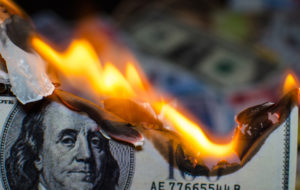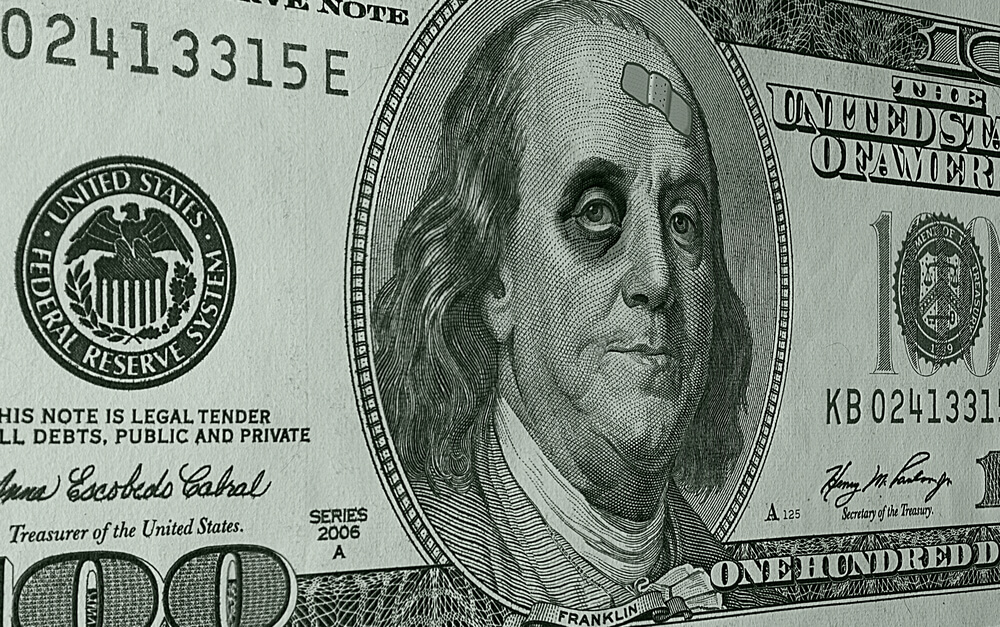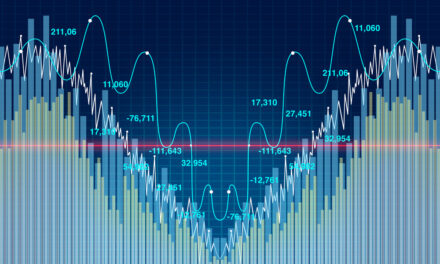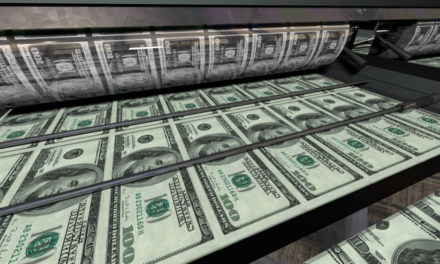The world’s reserve currency has faced a lot of headwinds in the past few months, but developments overseas could lead to a dollar crash for the ages.
Stephen Roach, Morgan Stanley’s former Asia chair, said many factors are hitting the dollar at once, and it will lead to a 35% crash against other currencies.
“The U.S. economy has been afflicted with some significant macro imbalances for a long time, namely a very low domestic savings rate and a chronic current account deficit,” Roach said during an appearance on CNBC’s “Trading Nation” on Monday. “The dollar is going to fall very, very sharply.”
The U.S. dollar index, which tracks the dollar against six other major world currencies, traded slightly higher, right around 97, Wednesday afternoon. Demand for the dollar spiked March through May, but has settled down again recently.
While Money & Markets’ resident currency expert, Tom Luongo, agrees on an impending dollar crash, he also thinks there is a potential spike in the works. And investors should watch developments overseas for insight on the dollar’s future.
“I think the dollar has a 35% fall in it — or more — but only after we get a peak, which we haven’t seen yet,” Luongo wrote via email. “For the past two years, the central banks have worked overtime to keep the dollar from rising thanks to massive offshore dollar-denominated liabilities. These still exist, some $8-9 trillion of them in the form of nonbank foreign corporate debt that was borrowed in dollars when the Federal Reserve was at the zero-bound rate under (former Fed Chiefs Ben) Bernanke and (Janet) Yellen. That hasn’t been worked off yet.”
Luongo points to a sovereign debt crisis as a major force in maintaining the dollar’s status as king of currencies — but a dollar crash is on the horizon.
“After a collapse of the euro — which will be necessary to even get the planned debt mutualization scheme by German Chancellor Angela Merkel and French President Emmanuel Macron off the ground — among other emerging market currency collapses, then the window opens up for the dollar to be let go by our creditors,” he said.
And current action, as the dollar moves downward, may not tell the whole story.
“What we’re seeing now is a false move down in the dollar which will get everyone on the wrong side of the trade once it becomes clear Europe has no answers,” said Luongo, Publisher of the Gold Goats ‘n Guns newsletter. “This may last through the election as the domestic political pressure on Donald Trump increases, adding uncertainty to the U.S. political situation. But with Brexit looming, Germany giving up fiscal restraints and Powell holding off on going negative with rates, there’s still a lot of potential for a dollar spike.”
Dollar Crash Signals to Watch for
 If you’re an investor looking for warning signs of an impending dollar crash, Luongo says to keep an eye on the euro.
If you’re an investor looking for warning signs of an impending dollar crash, Luongo says to keep an eye on the euro.
“The ECB was the biggest feeder at the Fed’s trough of dollar-swaps in the wake of the dollar spasm of early March,” Luongo said. “Those swaps are still on the Fed’s balance sheet — nearly $450 billion. Watch the euro for a breakdown below $1.11 here for a move toward $1.07. If it doesn’t this week or next, then the dollar will likely hold in the current range for a while as crosscurrents keep things in check.”
The euro was trading at $1.12 around noon EDT Wednesday and Luongo thinks a combination of the Fed’s pledge to avoid negative interest rates ups the pressure against the European Central Bank. That will in turn lead the dollar higher before it crashes.
“The dollar should slowly rise off its recent lows with a spike higher into 2021 and possibly into 2022, depending on how things play out in Europe and whether Trump wins reelection,” Luongo wrote. “After that, the dollar will collapse as the outstanding foreign debt is defaulted on/redenominated in local currency, or paid off. As the dollar rises, the default risk overseas explodes. Trump has made the dollar persona non grata overseas and many are looking to dump it, just not until it is in their best interest to do so and they see how this internal conflict in the U.S. plays out.”
Investors should keep a close eye on other assets as well, but the euro is the key.
“Gold will attend to itself. Gold should sell off in any highly illiquid market action, but it will be temporary like we saw in March,” Luongo wrote. “These past 10 weeks have been telling me that gold can’t rally on a weak dollar … that means we’re looking at a reflation trade based on false hope, rather than a real one. The fundamentals for the U.S. dollar, gold, Bitcoin and U.S. stocks are strong as safe-haven assets.”
Another asset that doesn’t make the headlines as often but is setting off Luongo’s radar for the dollar crash are German bunds, the equivalent of U.S. Treasurys in Europe’s largest economy.
“A push above -0.20% on the German 10-year, weekly closing and then monthly closing basis, would be a signal that there’s long-term upward pressure on rates in Europe that Christine Lagarde at the ECB can’t counter,” Luongo said. “With Germany going on a fiscal spending binge, it’s going to be hard to keep fooling markets that there isn’t something rotten at the heart of Europe.”
While the world’s favorite currency is likely safe for now, there are plenty of warning signs of an impending dollar crash.




